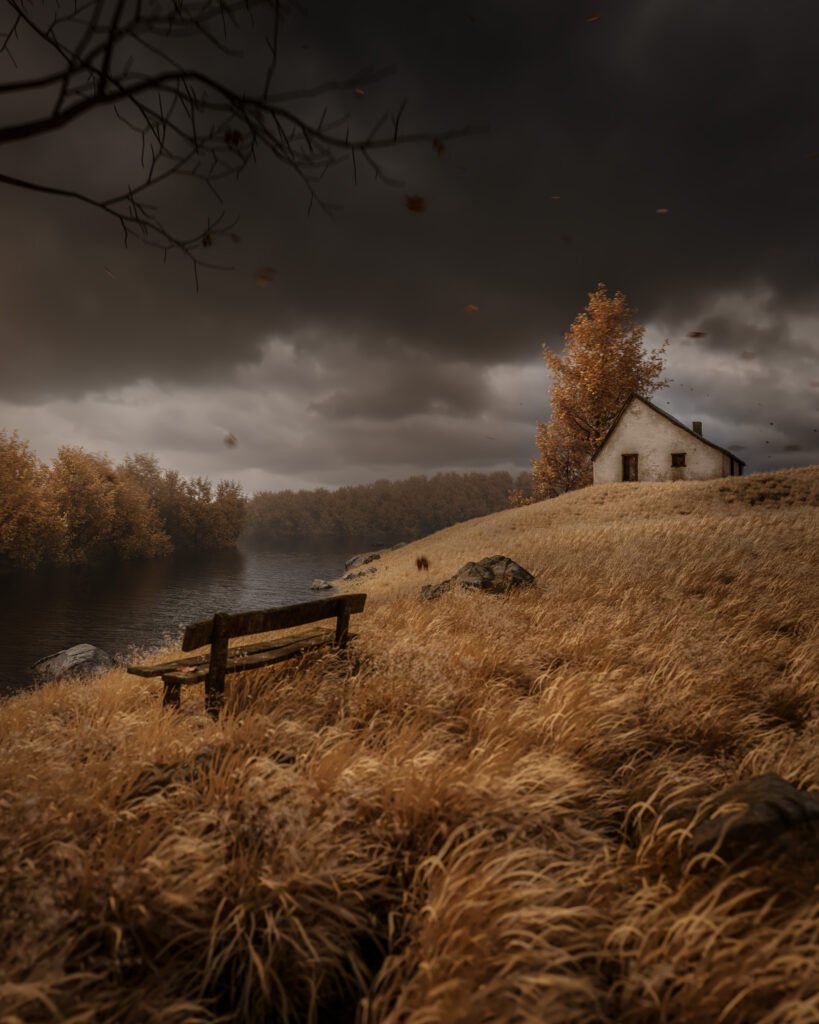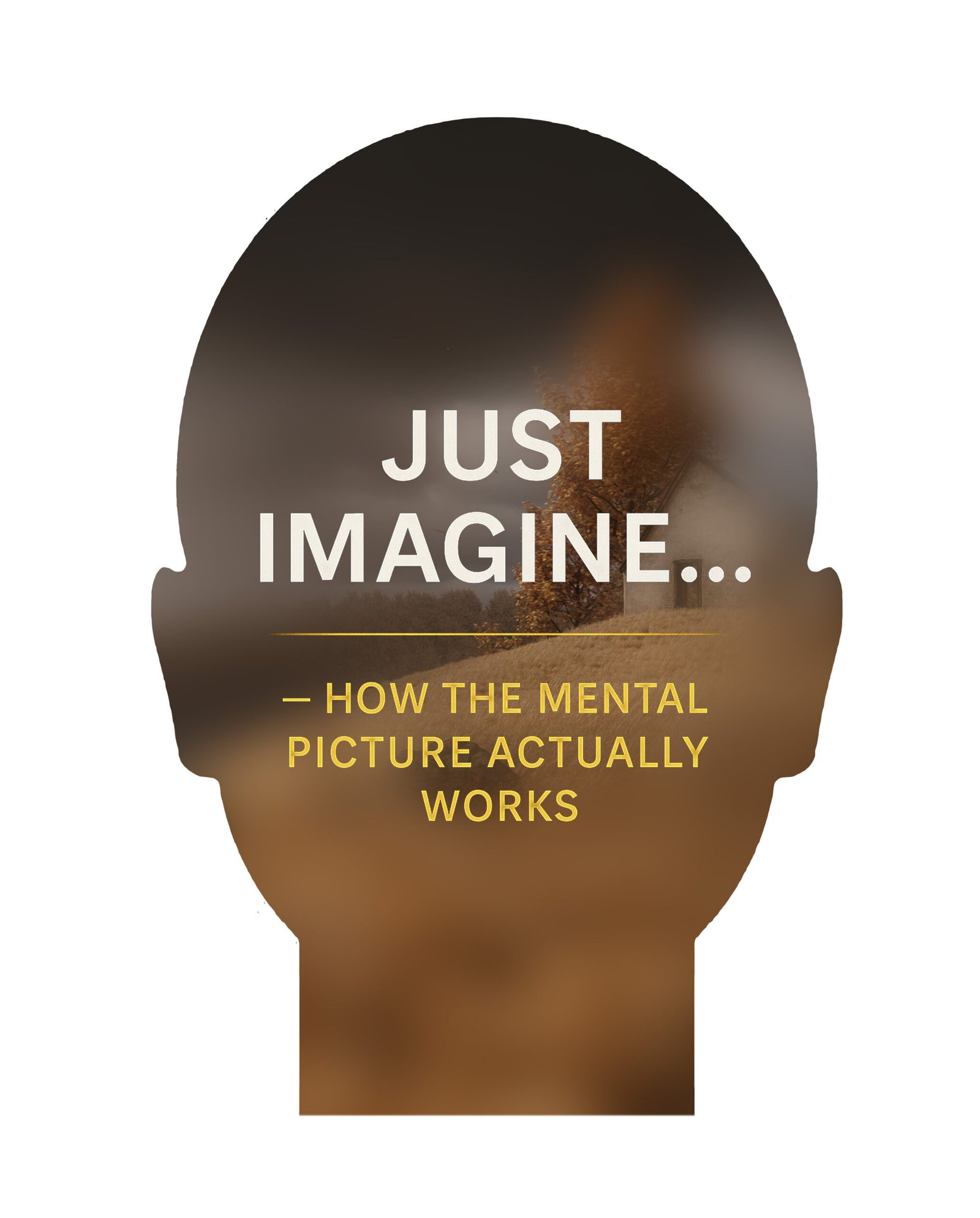Imagine a tree.
In a backyard.
The tree is a palm.
Next to a small house.
The house is red.
No, no — the house is black. Black bricks.
There’s a swing next to the tree.
What color is the swing?
There’s an old bicycle leaning against the tree.
Did I mention that it’s snowing everywhere?
No, actually — it’s a sunny summer day.
Yes, there is sand all around the tree.
What you just created and edited in your head is a mental picture. A mind’s eye.
You can add details, change colors, the point of view, the weather — literally everything.
That is the place where art is created. In your mind.
When reading a novel, you do this all the time.
Also when listening to a story.
Every person has this ability — but only artists feel the need to create, to give it a physical form.
To show the world their unique view.
And for me, there is nothing more magical than this:
Making art is literally using a piece of your mind — and giving it to the world.
To live there forever.
MIND MEDIUM
For this medium, you need nothing. Just an empty mind.
But actually, that’s the problem.
Why?
Because having an empty mind is one of the hardest things for human beings.
One of the best tools to help you empty your mind is meditation.
But — that’s a subject for another day.
Even when you’re making something from reference images or real models — the mental picture is still in the game.
Sometimes less, sometimes more — but every piece of art is made with the help of this ability.
TWO STEPS OF MAKING ART
This is how I see the creative process:
STEP ONE: Imagine your piece of art in your mind.
STEP TWO: Convert it into physical form (painting, 3D render, sculpture, etc.).
That’s it. Two steps.
Remember these two steps — I’ll get back to them in a moment.
For both, you need experience. A lot of it.
You surely know that feeling — trying to make something in your art, but not liking it.
That’s probably because of this:
You didn’t imagine it clearly enough.
We usually think we have. But we haven’t.
I think it’s a kind of bug in our mental system.
IDEA
When you want to make something great — and you fail to bring it to life — it’s often because you didn’t imagine it deeply enough.
The idea is, at first, something blurred.
Like a pre-pass in an old render engine.
You need to render that idea in your head.
With every “pass” of thinking about it, the image gets more defined.
At some point, you’ll see it so clearly that all you need to do is translate it into physical form.
And for that, you need skill.
But remember:
Technical skill is nothing more than a tool.
The place where the art is created is your mind.
Even when experimenting with tools and techniques, you’re constantly returning to the mental image — reshaping it, refining it, and then trying again.
This is not just my way of working — this is how we all work.
STEP TWO IS EASY. STEP ONE IS NOT.
Everyone can learn step two.
But mastering step one is mental work.
Hard mental work.
And you have to keep reminding yourself of that.
Sometimes I spend days stuck on a single shot — and then realize I never truly stopped to think deeply about it.
A few focused minutes of imagining the scene properly is often all it takes to find the answer.
It’s not easy — But it’s necessary.
And this applies to everything:
Painting, rendering, music, architecture, sculpting, business ideas, machines, fashion, construction…
This is how humans work.
It’s how we made everything in this world.
It’s what makes us unique.
We imagine — and then we build.
FILMMAKING
The clearest example of this process is filmmaking.
A director reads a script — and while reading, they imagine scenes in real time.
If they like what they see in their mind — that’s a good starting point.
That’s why people often say:
“I liked the book much more than the movie adaptation.”
Because they imagined it in their own way.
And the more experienced you get in visual art —
the richer your imagination becomes.
You start reshaping your mental images automatically — making them more refined, more stylistic, more yours.
CONCLUSION
I could talk about this subject for hours. Days. Endlessly.
Because it’s one of the most magical abilities we have as human beings.
But I won’t.
I want to leave space for you — to think about it, to reflect, and to explore why this is such a fascinating and limitless process.

Until next time —
stay curious.
— Stefan
P.S. At some point, I’ll share my workflow — how I turn ideas into finished pieces of art.
Subscribe to my newsletter and get tips, tricks, and personal stories about the creative process — straight from the source.
Got questions? I’d love to hear from you: stefan@vizzzia.com

